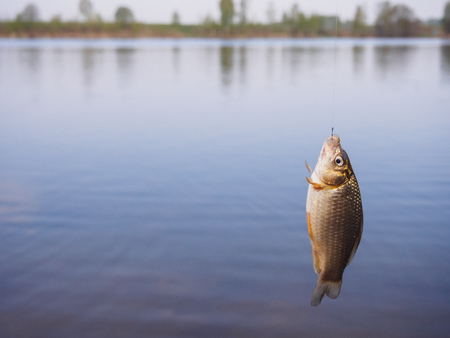Introduction to Protected Water Bodies & Sanctuaries in India
Imagine gliding gently along the tranquil waters of a village tank at dawn, the mist curling over lotus leaves while distant temple bells echo across the banks. This is not just a scene from an old Bollywood movie—its daily life in many corners of India, where water bodies are woven into the very fabric of culture and spirituality. From sacred ghats on the Ganga to serene lakes in Rajasthan, these water bodies arent just about natural beauty; they hold centuries-old stories, support vibrant communities, and shelter unique wildlife. Across the subcontinent, sanctuaries and restricted areas have sprung up to protect these vital havens. The need for protection is as urgent as ever: increasing urbanisation, pollution, and climate change threaten both people and nature. By safeguarding lakes, wetlands, rivers, and their surrounding sanctuaries, India preserves not only its ecological balance but also the livelihoods and traditions of millions. As we embark on this state-wise journey through Indias protected aquatic jewels, let’s take a leisurely dive into why these spaces matter—both for the dancing sarus crane and for every chai-sipping villager nearby.
2. Northern India: Lakes, Wetlands & Sacred Reservoirs
If your heart yearns for tranquil waters with a sprinkle of local legend, Northern India is a treasure trove waiting to be explored. From Himachal Pradesh’s shimmering lakes nestled amidst snow-draped mountains, to Punjab’s bustling wetlands that play host to migratory birds, and down to ancient reservoirs revered as sacred by generations—each water body here has its own tale to tell.
Himachal Pradesh: The High-Altitude Jewels
Drift along the serene waters of Rewalsar Lake, believed by locals to hold spiritual powers. Or lose yourself in the alpine beauty of Chandratal and Renuka Lake, both protected as ecological sanctuaries. These lakes aren’t just scenic—they’re cradles of myth and biodiversity.
| Lakes/Sanctuaries | Status | Cultural Significance |
|---|---|---|
| Rewalsar Lake | Protected Site | Buddhist & Hindu Pilgrimage Spot |
| Chandratal Lake | Ramsar Wetland | High-altitude Ecology |
| Renuka Lake Sanctuary | Wildlife Sanctuary | Sacred to Goddess Renuka Devi |
Punjab: Wetlands Alive with Wings and Water
Punjab’s wetlands are alive with stories, especially during winter when migratory birds paint the skies. Harike Wetland, at the confluence of Beas and Sutlej rivers, is a paradise for birdwatchers and nature lovers. Kanjli Wetland and Ropar Wetland are also designated Ramsar sites, recognized internationally for their ecological importance.
| Wetland/Sanctuary | Status | Main Attraction |
|---|---|---|
| Harike Wetland | Ramsar Site, Bird Sanctuary | Migratory Birds (Siberian, Bar-headed Geese) |
| Kanjli Wetland | Ramsar Site | Sarus Crane Habitat |
| Ropar Wetland | Ramsar Site, Wildlife Sanctuary | Aquatic Flora & Fauna Diversity |
Uttarakhand & Uttar Pradesh: Sacred Reservoirs and Restricted Areas
The Ganga flows through these states, nourishing both fields and faith. Reservoirs like the Naini Lake in Nainital (Uttarakhand) are not only scenic but revered; many are protected under state acts or listed as restricted zones due to their cultural importance. In Uttar Pradesh, vast stretches along the riverbanks fall under protected or restricted status to conserve heritage and ecology.
Cultural Note: Water as Life & Legend in the North
No journey through North India’s waters is complete without dipping into the local reverence for these sites—where villagers perform rituals at dawn on lake shores or celebrate festivals around reservoirs believed to be gifts from ancient sages. Here, each ripple carries whispers of old myths and everyday prayers.
Your Drift Continues…
This is just a taste of Northern India’s watery wonders—a blend of sanctuary, spirituality, and story that invites you to float gently onwards in your own fishy adventure!

3. Eastern India: Mangroves, Estuaries & River Islands
When you wander along the eastern coast of India, a dreamy landscape unfolds—lush mangroves, swirling estuaries, and river islands steeped in local tales. In Bengal and Odisha, these protected water bodies are more than just geographical features; they are the keepers of centuries-old legends and the heartbeats of vibrant communities.
The Sundarbans: A Living Legend
At the delta where the Ganges meets the Bay of Bengal lies the iconic Sundarbans, a UNESCO World Heritage Site. This vast mangrove forest is famous not only for its elusive Royal Bengal tigers but also for mythical tales whispered by honey collectors (Moulish) and fishermen. Locals believe Bonbibi, the guardian goddess, watches over every creek and mudflat. Here, sanctuaries like Sajnekhali and Lothian Island are designated safe havens where nature’s rhythm is respected and protected.
Chilika Lake: Odisha’s Brackish Gem
Further south, Chilika Lake sprawls across coastal Odisha as Asia’s largest brackish lagoon. Birdwatchers flock to Nalabana Bird Sanctuary each winter, drawn by migratory flamingos and pelicans. Fisherfolk villages dot the lake’s edge, their boats dancing on dawn-lit waters. The Irrawaddy dolphins here are not just a tourist attraction—they’re woven into local folklore, believed to guide fishermen to abundant catches.
Brahmaputra’s Majuli: The Riverine Soul
Travel upstream to Assam’s Brahmaputra River and you’ll find Majuli—one of the world’s largest river islands. Protected as an eco-sensitive zone, Majuli isn’t only about scenic beauty; it pulses with Assamese culture, home to age-old Satras (Vaishnavite monasteries) and annual festivals celebrating river life. Community-driven conservation ensures that both tradition and biodiversity thrive together.
Cultural Connections & Conservation Efforts
Across eastern India, protected areas aren’t isolated from daily life—they’re interwoven with community rituals, fishing bans during breeding seasons, and folk festivals honouring water spirits. From state-run wildlife divisions in West Bengal to local panchayats in Odisha and Assam, everyone plays a role in safeguarding these watery treasures.
So whether you’re tracing tiger paw prints in muddy creeks or sharing chai with riverside villagers listening to stories under banyan trees, Eastern India’s protected water bodies invite you to slow down, soak up ancient wisdom, and witness a living harmony between people and place.
4. Western India: Desert Oasis & Restricted Water Sanctuaries
If your heart is drawn to the dry, golden lands of Gujarat and Rajasthan, you’ll find that water here is more than just a resource—it’s a lifeline, steeped in local legend and fierce protection. Western India’s deserts cradle some of the most unique step-wells (locally known as ‘vavs’), hidden oases, and sanctuaries, each echoing with stories of survival and celebration.
Sail gently into these marvels: centuries-old step-wells like Gujarat’s Rani ki Vav and Rajasthan’s Chand Baori aren’t just architectural wonders—they are now protected sites, their access regulated to preserve both heritage and the delicate desert micro-ecosystems they nurture. Oases such as the Sambhar Salt Lake shimmer under the sun, ringed by careful restrictions that shield rare birds and fragile aquatic life from harm.
The guardianship of these waters is not only about rules—it’s woven into local customs. Sacred lakes like Pushkar are revered, with bathing ghats designated for pilgrims and zones strictly off-limits to maintain ecological balance. Each state has its own list of protected water bodies and restricted areas, making it easy for visitors to navigate with respect.
State-wise Protected Water Bodies & Sanctuaries in Western India
| State | Protected Sites | Type | Access Restrictions |
|---|---|---|---|
| Gujarat | Rani ki Vav, Nal Sarovar Bird Sanctuary, Thol Lake | Step-well, Lake Sanctuary | No boating/fishing; guided tours only; permits for birdwatching |
| Rajasthan | Chand Baori, Sambhar Salt Lake, Pushkar Lake | Step-well, Salt Lake, Sacred Lake | Certain areas off-limits; photography restrictions; bathing only at designated ghats |
A Glimpse into Local Wisdom
The people here say “Pani re panihari,”—the water-carrier is as precious as the water itself. Locals revere these water bodies not just for sustenance but for spiritual solace. Many festivals revolve around these lakes and wells, yet all festivities follow strict codes to protect the fragile environment.
Visiting Tips for Travelers:
- Always check local guidelines before visiting sanctuaries or step-wells.
- Respect ‘no entry’ signs—these zones are vital breeding grounds for desert wildlife.
- If you wish to photograph, seek permission; some sites are sacred or ecologically sensitive.
- Engage with local guides—they offer fascinating tales about how villagers have lived in harmony with these rare waters for generations.
So when you wander through the arid beauty of Western India, let your journey be gentle—a respectful drift through timeworn stone corridors and shimmering salt flats where every drop is treasured. The spirit of these protected oases invites you not just to visit, but to pause and listen—to stories whispered by rippling waters and echoed by desert winds.
5. Southern India: Backwaters & Marine Sanctuary Realms
If you ever find yourself yearning for a gentle escape, the backwaters of Kerala are a dream woven in emerald and blue. Glide along these tranquil waters—perhaps aboard a traditional kettuvallam houseboat—where life moves at a deliciously unhurried pace. Kerala’s famed Vembanad and Ashtamudi lakes are not just scenic wonders but also protected water bodies, cherished both for their biodiversity and as the heartbeats of village communities.
Kerala’s Aquatic Sanctuaries
The state government has carefully listed out its protected water bodies, including enchanting wetlands like Kuttanad, where flocks of migratory birds find sanctuary. Here, conservation isn’t just policy—it’s a way of life, celebrated through festivals and daily rituals like fishing with Chinese nets or harvesting lotus stems. These protected sites are vital for both wildlife and local livelihoods, balancing tradition with ecological mindfulness.
Tamil Nadu: Oceanside Guardianship
Travel further east and Tamil Nadu greets you with its sun-kissed coastline. The Gulf of Mannar Marine National Park stands out—a sparkling necklace of islands where coral reefs bloom beneath the waves and endangered sea turtles nest along sandy shores. This region is designated as a restricted area to protect its delicate marine ecosystem, yet it remains deeply entwined with coastal communities who rely on sustainable fishing passed down through generations.
Conservation Meets Culture
From the quietude of Kerala’s backwaters to the vibrant marine sanctuaries of Tamil Nadu, southern India offers a unique blend of environmental stewardship and everyday living. Whether it’s the morning chant from a riverside temple or the laughter echoing from a fisherman’s canoe, these protected zones are not just about preservation—they’re about celebrating life in harmony with nature, one gentle ripple at a time.
6. Regulations & Local Insights: Respecting the Sacred Flows
When wandering along the shimmering ghats and tranquil backwaters listed state-wise across India, it’s not just about following the rulebook—its about tuning into the ancient rhythm of the land. Each protected water body, whether it’s Rajasthan’s Sambhar Lake or Assam’s Deepor Beel, has its own set of guidelines that are as unique as a peacock’s plume. Now, don’t get caught napping! States roll out their own regulations—no fishing zones, restricted entry timings, eco-sensitive boundaries—often enforced with a firm but friendly “Arrey bhai, rules are rules!” from local guards.
Traditional Wisdom Flows in Every Drop
But regulations here are not just penned by babus in distant offices; they’re seasoned with centuries-old wisdom passed down by riverine communities, tribal elders, and temple trustees. Take the sacred Yamuna stretches or Kerala’s temple tanks—where rituals to honour the waters run side by side with conservation practices. Elders might tell you, “Jal hai toh kal hai”—if there’s water, there’s tomorrow. Community-driven patrolling, folk traditions like ‘Jal Yatra’ (water pilgrimages), and even age-old taboos against polluting certain ponds keep these places pristine long before “protected area” became a buzzword.
Desi Guardians: Community to the Rescue
Peek behind the scenes and you’ll find local fishermen associations, women’s self-help groups, and youth clubs working hand-in-hand with forest departments. They know every bend in the river and every mood of the monsoon. Their grassroots efforts—be it cleaning drives or fish breeding bans during spawning season—are often more effective than any signboard. In Gujarat, for instance, “Each drop is precious,” isn’t just a saying; it’s a way of life guarded fiercely by villagers who treat their lakes as living relatives.
A Little Indian English Wisdom for Fellow Travellers
If you’re planning to visit any sanctuary or restricted water zone from this state-wise list, remember: Don’t be a bull in a china shop! Listen to local advice, respect sacred spaces (sometimes marked by prayer flags or idols under banyan trees), and always ask before dipping your toes. The best stories come not from breaking rules but from sharing chai and gupshup (chatting) with those who call these waters home. That way, you’ll float smoothly through both regulations and traditions—leaving only gentle ripples behind.
7. Journey’s End: Eco-friendly Travel Tips & Responsible Exploration
So, you’ve mapped your route through India’s dazzling water sanctuaries and secret wetlands—what’s next? As your adventure draws to a close, let’s gather around for some homespun tips on how to travel gently across these precious blue realms. The rivers, lakes, and marshes of India are more than just scenic spots—they’re the lifeblood of our culture, whispered into folk songs and woven through our stories. Being a true dost (friend) to these waters is the ultimate souvenir.
Respect the Rhythm of Local Life
Every state has its own way of caring for its water bodies—be it Kerala’s backwaters or Gujarat’s bird sanctuaries. When you visit, greet local customs with respect. Learn a few words in the regional language; even a simple “Namaste” or “Vanakkam” can open hearts and doors. Ask before you click photos of sacred tanks or village ghats—sometimes, silence speaks louder than a selfie.
Leave No Trace, Carry Only Memories
India’s protected areas often have strict rules about littering, plastic use, and noise pollution. Carry your own reusable bottle and cloth bag—say no to disposable plastic chai cups and snack wrappers! If you spot rubbish by a lake or riverbank, be that friend who quietly picks it up. Every small act ripples outward.
Travel Lightly & Support Local Communities
Opt for eco-friendly stays run by locals—homestays, bamboo huts, or farm retreats where you can taste real desi flavours fresh from the field. Travelling slow means more time to soak in the sights and sounds of wetlands at dawn, or watch egrets dance in golden light. Buy handicrafts directly from village artisans instead of touristy shops—the river goddess will thank you.
Follow Sanctuary Rules: They’re There for a Reason
If an area is marked as restricted or protected, it’s not just for show—it helps birds nest safely and turtles hatch undisturbed. Stick to marked trails and respect quiet zones, especially during breeding seasons. If you want to explore deeper, hire certified guides from local eco-clubs—they know every bend in the river and can spin you stories older than any guidebook.
Be Curious & Spread Awareness
Ask questions—about migratory birds in Bharatpur, about ancient stepwells in Rajasthan, about why certain ponds are worshipped as living temples. Share what you learn with friends back home or on social media (responsibly!). When you become a storyteller for India’s water wonders, you help weave a wider net of care.
The Way Forward: Our Waters, Our Responsibility
Your journey through India’s protected water bodies might end here—but their story continues with each visitor who travels mindfully. By being gentle guests today, we ensure that these shimmering sanctuaries remain alive for tomorrow’s dreamers. So pack your memories carefully—and wherever your road leads next, remember: every river needs a friend like you.


